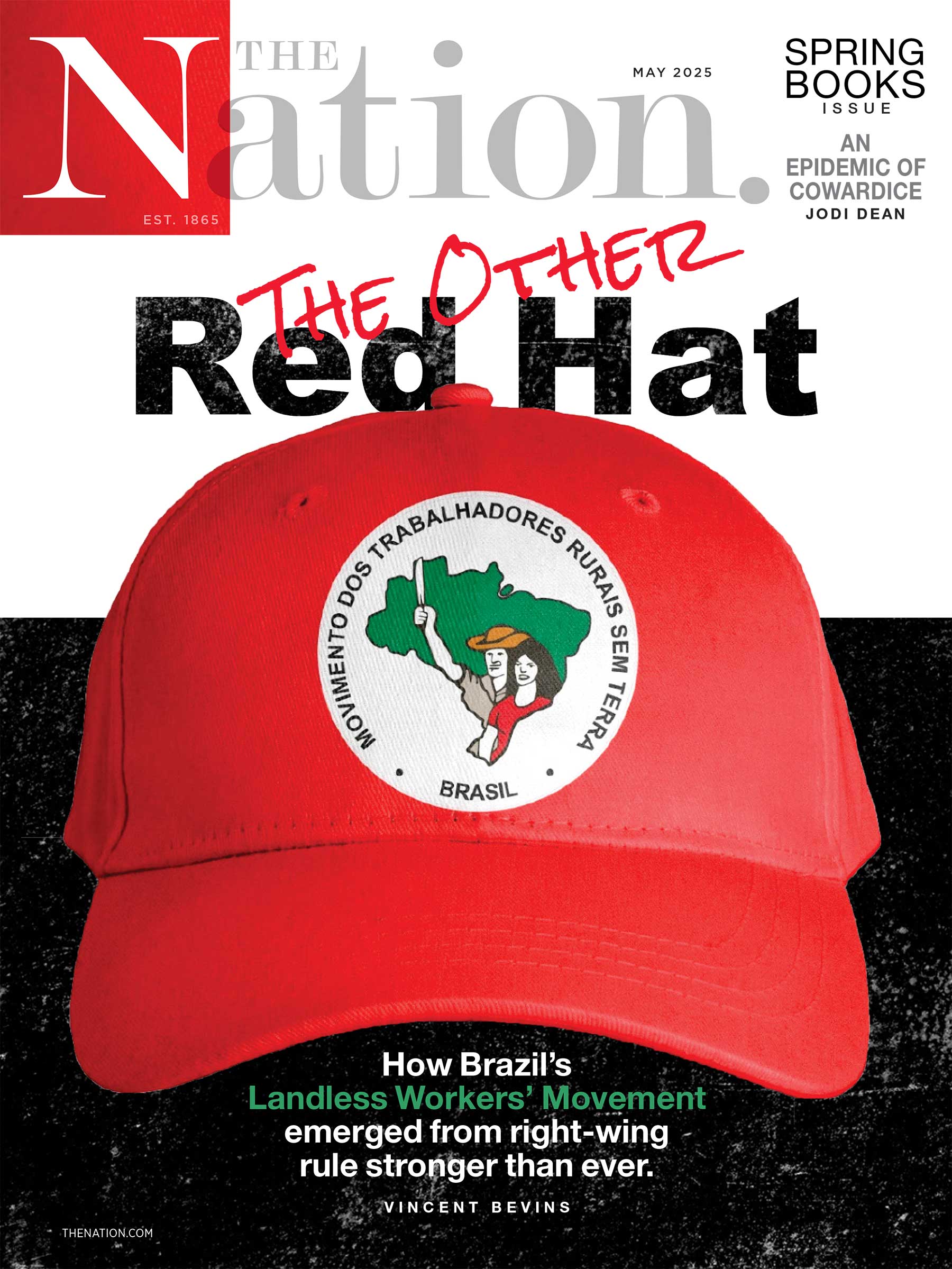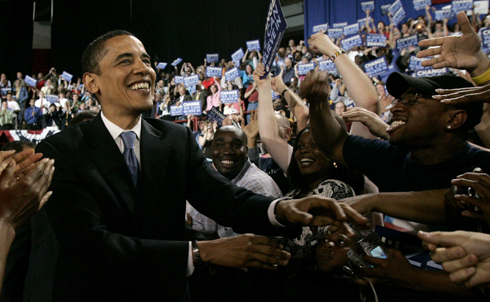
On the 2008 campaign trail, Barack Obama pledged to close tax loopholes that allow the company’s wealthiest corporations shield profits in offshore havens, and early in his presidency he outlined just how he planned to do so. But as last week’s State of the Union proved, he’s still trying. What’s preventing the president from making corporations pay their fair share?
As The Nation‘s Johann Hari explains in his report on widespread UK protests against corporate tax dodgers in this week’s issue, the main reason for the lack of action may be that we simply aren’t asking for it forcefully enough. According to Hari, the Government Accountability Office calculated in 2008 that 83 of the US’s 100 corporations hide fortunes in tax havens [PDF], even as many of those corporations were receiving federal dollars from the government’s TARP bailout. Why were these corporations receiving taxpayer money when they weren’t even paying their own taxes?
Credit: AP Images
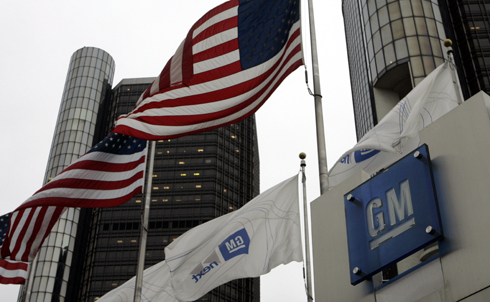
In 2008, after years of institutional stagnation and falling sales, General Motors received a whopping $51 billion in TARP funds to remain in business. But according to the GAO data, the auto giant also held money in 11 tax havens, including one located in Ugland House, the 5-story building in the Cayman Islands that is home to over 18,000 companies—a set-up that Obama called the “biggest tax scam on record.”
Credit: Reuters Pictures
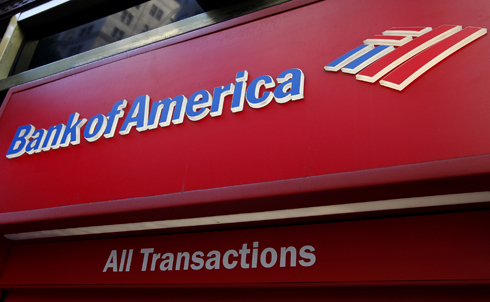
Around the time Bank of America and its subsidiary Countrywide Loans were foreclosing homes across the country (and giving out rock-bottom rate loans to its politician friends), it was also enjoying a TARP windfall to the tune of over $45 billion. But BoA also had accounts in 115 offshore tax havens—shouldn’t the government have forced the corporation to close those off-the-books accounts before it gave it a very on-the-books bailout?
Credit: Reuters Pictures
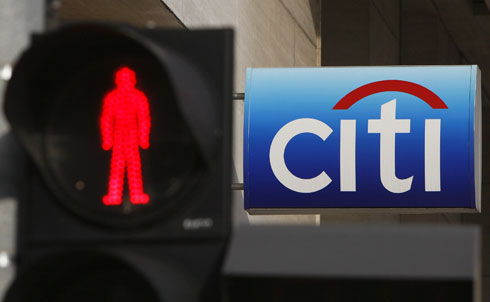
Citigroup, the bank with the biggest financial network in the world, also had the most accounts in offshore tax havens: a full 427 by the GAO’s count. Like Bank of America, Citigroup also received $45 billion in TARP funds.
Credit: Reuters Pictures
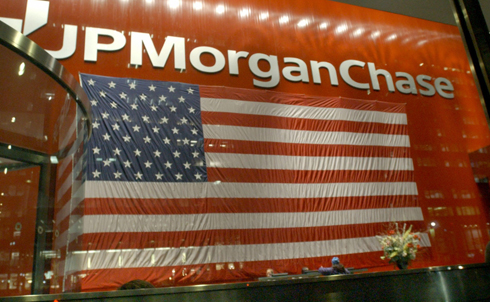
The government loaned JP Morgan Chase over $25 billion as part of the TARP bailout. But the massive banking firm also operated 50 subsidiaries in tax havens, including 7 in the Cayman Islands, a 0% corporate tax nation.
Credit: AP Images
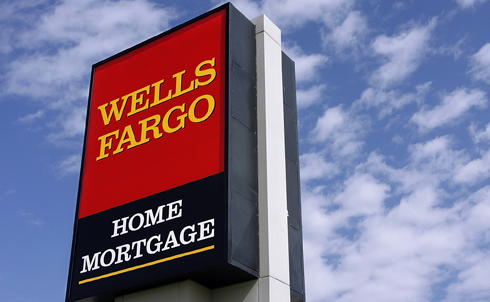
According to the GAO data, Wells Fargo operated 18 subsidiaries in tax havens (including 9 in, again, the Cayman Islands). Despite dodging their own taxes, the banking group received over $25 billion in TARP money.
Credit: AP Images

Since 2008, GMAC has received $16 billion in TARP funds, despite operating subsidiaries in known tax havens. Last year, GMAC rebranded itself Ally Financial—perhaps an attempt to divert attention from the fact that they have yet to pay back their government bailout money.
Credit: AP Images
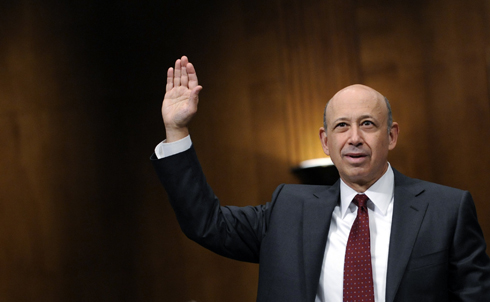
Goldman Sachs, the financial firm led by Lloyd Blankfein (seen above at a Senate investigation into investment banks) that can boast former Secretary of the Treasury Henry Paulson among its alumni, should also be up front about the 29 tax-dodging accounts the firm held the year before it received $10 billion in TARP funds from the government. Maybe the feds should have done a little more research into Goldman Sachs before doling out the cash: just last year, the firm was charged with exacerbating the sub-prime mortgage crisis by producing risky investment options.
Credit: AP Images
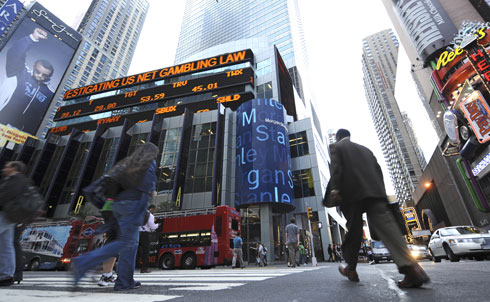
Morgan Stanley is another big fan of the Cayman Islands, operating 158 of their 273 tax-dodging subsidiaries there. Did the firm really deserve the $10 billion in TARP money the government sent their way in 2008?
Credit: AP Images
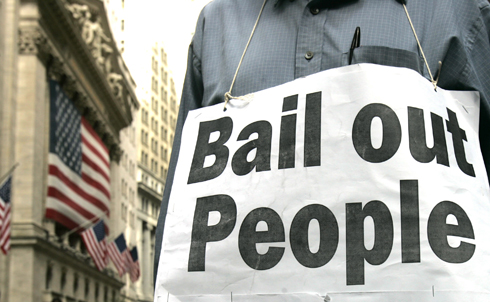
According to a congressional report, the cost of offshore tax abuses could be as high as $100 billion per year [PDF]. The corporations in these slides have been tricking the government twice over: first by hiding their money in offshore accounts and second by claiming they still needed the fed’s TARP funds.
Plenty of corporations not on this list didn’t get bailout money, but are still robbing Americans of tax revenue that should rightly be all of ours—massive pharmaceutical companies like Pfizer and retail companies like Apple, BestBuy, ExxonMobil, FedEx, McDonald’s and Safeway are just a few of the more recognizable corporations funneling money through tax havens.
In a time of crippling budget cuts across the US, Hari argues in his article in this week’s issue, “most of these cuts could be prevented simply by requiring super-rich individuals and corporations to pay their taxes.” What are American taxpayers waiting for? Read this 10-step guide to holding these corporate tax dodgers accountable for more ways to make them pay their fair share.
Research for this slide show provided by Kevin Gosztola
Credit: Reuters Pictures
